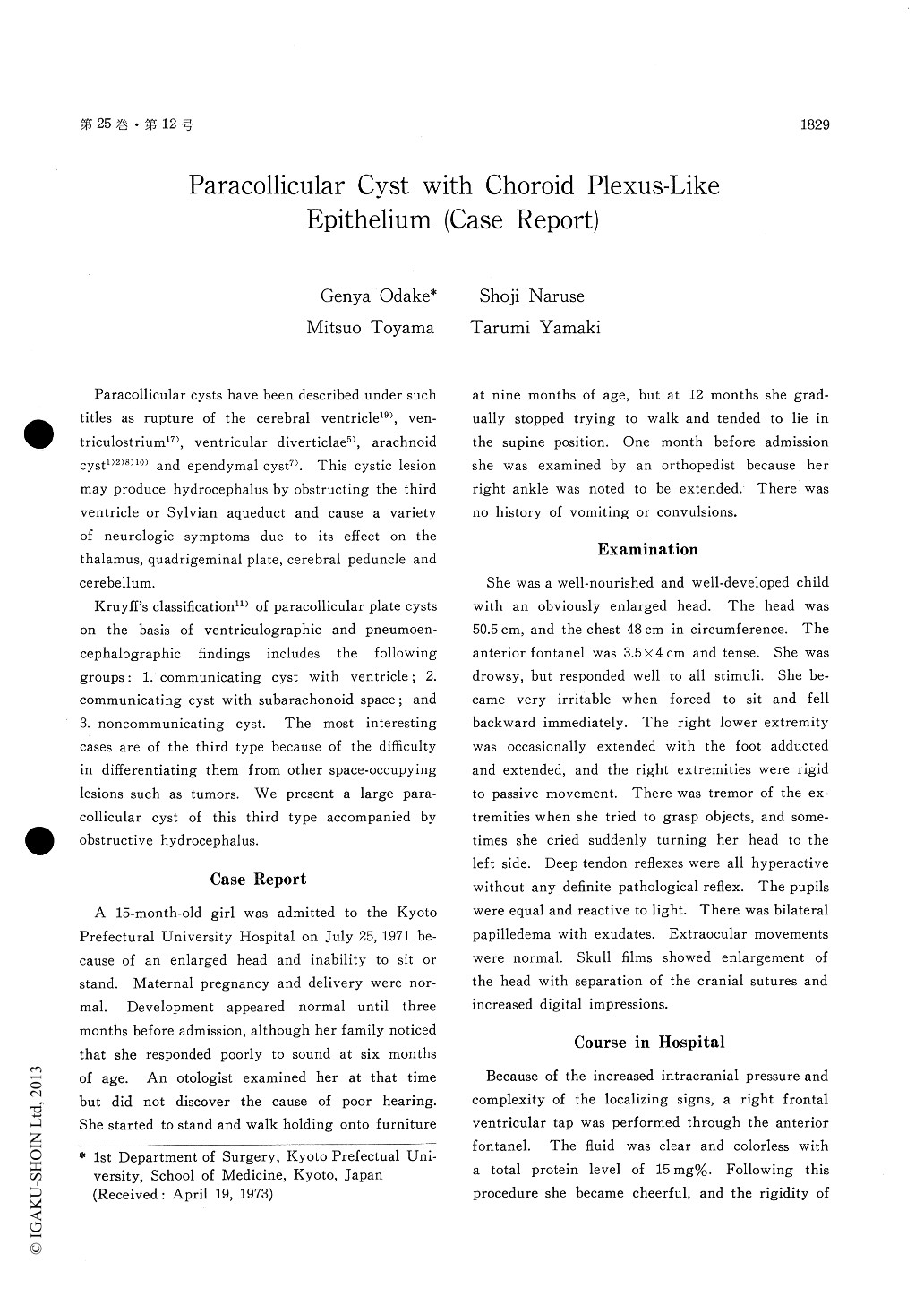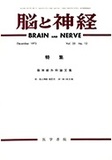- 有料閲覧
- 文献概要
- 1ページ目
Paracollicular cysts have been described under such titles as rupture of the cerebral ventricle19), ven—triculostrium17),ventricular diverticlae5), arachnoid cyst1)2)8)10) and ependymal cyst7). This cystic lesion may produce hydrocephalus by obstructing the third ventricle or Sylvian aqueduct and cause a variety of neurologic symptoms due to its effect on the thalamus, quadrigeminal plate, cerebral peduncle and cerebellum.
Kruyff's classification11) of paracollicular plate cysts on the basis of ventriculographic and pneumoen—cephalographic findings includes the following groups: 1. communicating cyst with ventricle; 2. communicating cyst with subarachonoid space ; and 3. noncommunicating cyst. The most interesting cases are of the third type because of the difficulty in differentiating them from other space-occupying lesions such as tumors. We present a large para—collicular cyst of this third type accompanied by obstructive hydrocephalus.

Copyright © 1973, Igaku-Shoin Ltd. All rights reserved.


